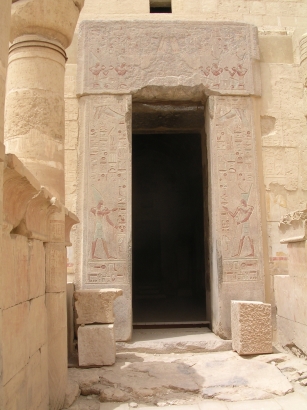This is another portion from the author’s notes at the end of Scenes From a Life. This, and the rest of the book, is undergoing heavy proof-reading and editorial work just now…

Tomb inscriptions are one of our main windows into Egyptian life at royal and elite levels. Tourists to Egypt, and visitors to museums all around the world, still look at these today. Here in London, the New Kingdom Egyptian galleries in the British Museum provide excellent background material to this story, as well as being well worth a visit on their own account.
As Makty-Rasut comments to his friend Sanedjem-Keni, the royal tombs focus almost entirely on formal religious themes. These are often individually expressed in different tombs, but display broadly the same ideas and images. This is because of the specific role that the ruler was expected to fulfill in the afterlife. A great deal depended on him carrying out the right actions in the right way, so the tomb decorations revolved around ensuring that he would be armed with accurate information for the task at hand.
The tombs of elite individuals lower down the social ladder – priests, high-ranking soldiers, city officials, and so on – are very much more varied. Some scenes are popular and appear often, such as a hunting scene of a married couple on a boat in marsh-lands. Others, however, are unique, and capture for us something of the particular life of an individual. If the person had carried out any sort of official duty then we expect to find something of this in the tomb record. In addition, lively and inventive images can pop up in surprising places. We learn far more about life in Egypt from these tombs than from those in the Valley of the Kings.
An important part of the tomb was the autobiography. This was not intended to be a dispassionate or balanced account of the person’s life. Rather, it served as a kind of CV justifying to the gods why that individual should be allowed to enjoy the delights of the afterlife. These autobiographies therefore seem to us to be grossly self-congratulatory. In the early days of Egyptology, they were treated with great suspicion, or dismissed as having no historical merit. Nowadays they are regarded with more sympathy, and sifted for nuggets of value in amongst the generally up-beat expressions.
In Scenes From a Life, the snippets at the start of each even-numbered chapter are an invented but credible tomb autobiography for Makty-Rasut. Each one speculates how he might have presented for eternity the events described in that chapter. In contrast, the poems at the start of the odd-numbered chapters are taken from, or adapted from, one or other of the love poems which have been found in Egypt. Many of these were discovered near Luxor, in particular among the workmen’s houses at Deir al-Medina.
When reading translations of ancient Egyptian material, it is always worth remembering that the plain text version we read is only part of the whole. It is loosely similar to hearing the dialogue from a film soundtrack without seeing the pictures, since our written form is almost completely divorced from any underlying visual content. It does not really matter to us, and is largely overlooked, that the letter “A” originally derived from the head and horns of an ox. Today we routinely separate out writing from illustrations.
But with Egyptian writing, the visual and textual parts of an inscription were a unified whole. Since most letter signs still clearly showed their origins as pictures of real-world objects, it is easy to integrate the two. There are many places where one sign in the written text is placed so as to also form part of a composite pictorial scene. In other places, design elements in the picture can be read as words or suggestive puns.
The “hunting in the marsh” scenes mentioned above are loaded with such elements, indicating that the picture is not really about catching ducks or fish. The main message told by the visual metaphors is one of love, passion and fertility. A scribe such as Makty-Rasut would show his skill by weaving in such “hidden” stories in amongst a more simple surface-level picture.
